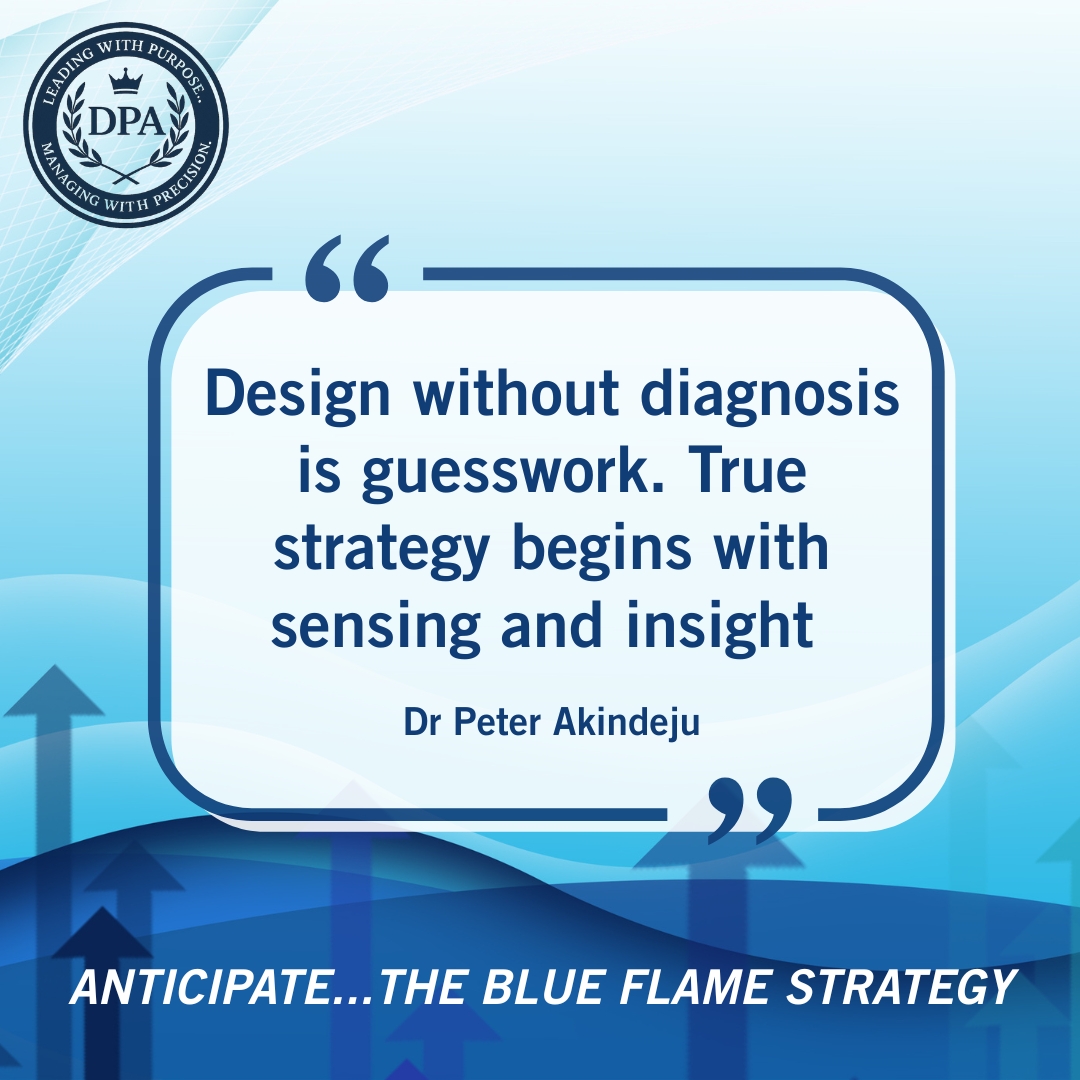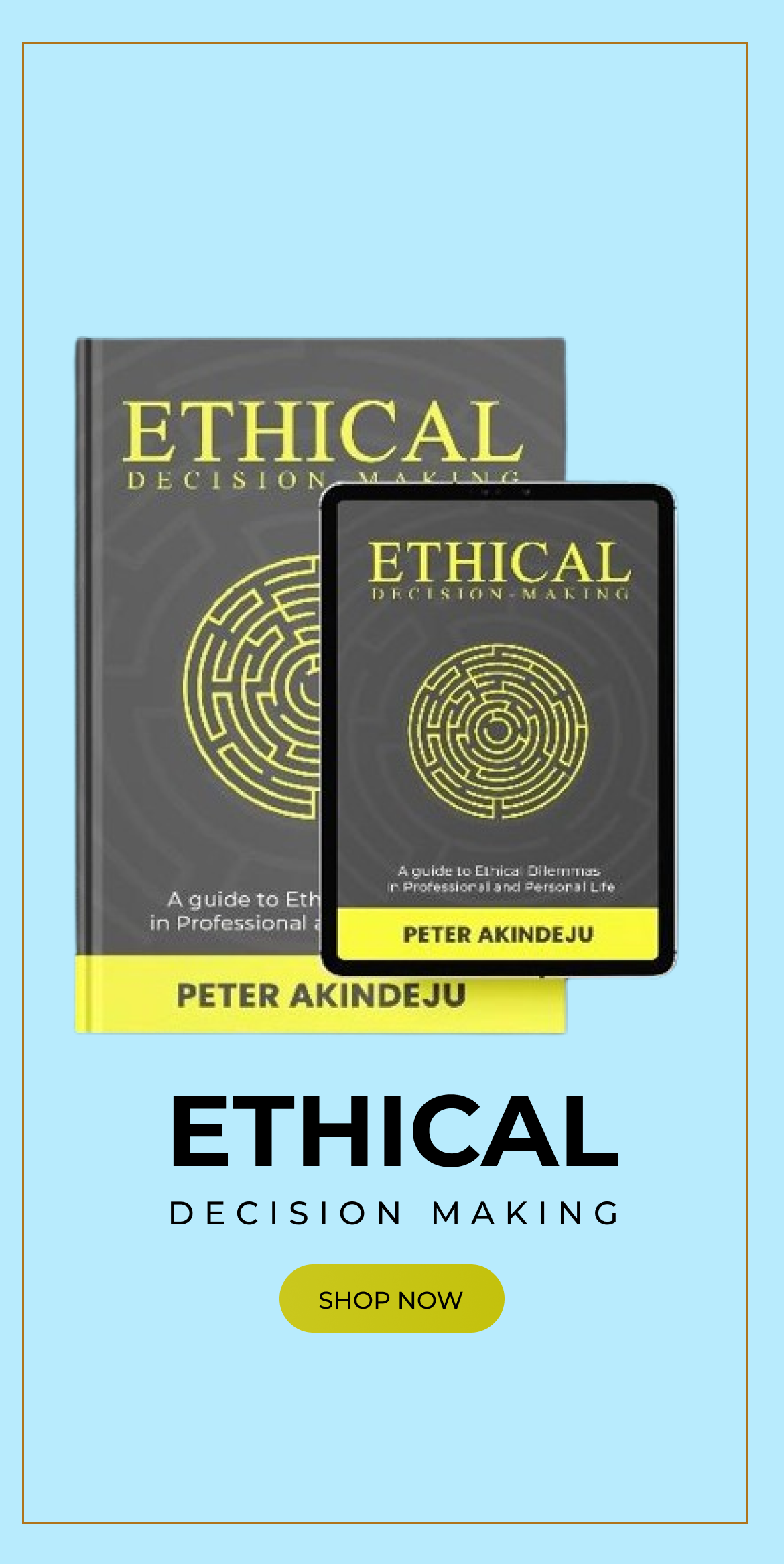
The Peril of Skipping Diagnosis
A leadership team once gathered in a sleek boardroom, determined to chart the company’s next big move. Confidence was high, timelines were tight, and the executives were eager to prove they could deliver bold growth. Within weeks, they unveiled a sweeping strategy: new products, fresh branding, and rapid expansion into unfamiliar markets. Applause followed.
But beneath the optimism, cracks began to show. The market they entered was already saturated. Customers were indifferent to the shiny branding because it did not speak to their actual needs. Inside the company, employees were stretched thin, morale was low, and resources were already under strain. Within a year, the initiative had unraveled; money wasted, credibility dented, and morale shaken.
The failure was majorly because the leaders skipped the essential first step: diagnosis. They designed without sensing the signals around them or drawing insight from the realities within. Their strategy was built on assumptions, not evidence.
In volatile and uncertain markets, many enterprises commit a critical misstep: they leap straight into designing strategies, structures, and initiatives without first diagnosing their context.
Strategy without diagnosis is speculation. Unless leaders first engage in sensing (systematically gathering external and internal signals) and insight (interpreting and contextualizing those signals), their plans risk misalignment with reality.
Diagnosis (encompassing environmental conditions, organizational capabilities, and stakeholder needs) is not a luxury. It is the foundation upon which resilient, credible, and adaptive strategies are built.
Sensing: Scanning the Strategic Landscape
Strategy begins not with bold ideas but with
disciplined observation. Effective sensing requires organizations to operate like strategic radars: detecting weak signals before they become strong disruptions.
External Sensing: Track macroeconomic trends,
regulatory shifts, competitor behavior, and customer sentiment. For instance, rising inflation or impending regulation should directly influence assumptions about pricing, risk exposure, and resource allocation.
Internal Sensing: Assess organizational health:
skills, culture, employee morale, infrastructure, and bandwidth. An ambitious growth plan will falter if executional muscles are weak.
The difference between proactive and reactive
sensing is the difference between anticipating
disruption and being blindsided by it.
Mechanisms such as environmental scans, stakeholder dialogues, analytics, and scenario planning institutionalize this discipline.
Insight: Converting Signals into Strategic
Meaning
Data in isolation is noise. Insight transforms signals into patterns, perspectives, and plausible futures.
Pattern Recognition: Distill recurring themes and anomalies from the noise.
Cognitive Framing: Relate these themes to the
organization’s mission, values, and competitive
position.
Hypothesis Generation: Ask “What if?” to probe
scenarios, risks, and emergent opportunities.
Insight is where strategy gains relevance. Without
insight, sensing merely collects fragments. Without design, insight remains unchanneled intelligence.
The Cost of Skipping Diagnosis
Organizations that bypass sensing and insight frequently fall into predictable traps:
Strategic Misfires: Pursuing glamorous initiatives (new products, brand refreshes, or bold expansions) while ignoring capability gaps or market realities.
Resource Waste: Misaligned designs squander
capital, talent, and assets.
Credibility Erosion: Employees and stakeholders lose trust when strategy feels tone-deaf to lived realities. Reversals or costly corrections damage leadership credibility.
Embedding Sensing and Insight in Practice
To move beyond episodic diagnosis and make it a strategic muscle, leaders must institutionalize
practices that bridge analysis with action:
Routinize Environmental Scanning: Build
systematic market intelligence and regulatory
foresight.
Foster a Listening Culture: Make feedback loops with employees, customers, and partners part of the daily rhythm.
Invest in Interpretation: Data without strategic thinkers is wasted. Prioritize interpretive talent alongside analytic tools.
Create Deliberation Forums: Strategy retreats, cross-functional debates, and scenario workshops sharpen collective insight.
Mandate Diagnostic Briefs: Require every major initiative to demonstrate its diagnostic basis: what was sensed, what insights emerged, and how design choices respond.
From Assumption to Advantage
Design without diagnosis is speculation dressed as strategy. By contrast, design rooted in sensing and insight reduces risk, deepens alignment, and enhances credibility. Leaders who embrace this discipline shift their organizations from assumption-driven planning to evidence-driven advantage. In turbulent markets, that difference
can determine whether the strategy is fragile or future-proof.
Leadership Implications
- Make environmental scanning and listening rituals on the leadership calendar.
- Fund interpretation capacity (analysts + strategists), not tools alone.
- Gate big bets with a one-page Diagnostic Brief before approval.
- Reward managers for early course correction, not heroic recoveries.

